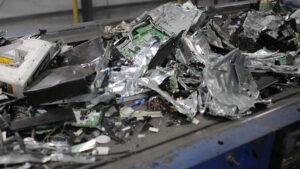There comes a point in every car owner’s life when they must decide whether the costs of repairing and replacing parts on their old car outweigh the benefits of selling it on to a new owner and upgrading to something newer. But would you guess that the same applies to your company’s IT assets?
Much like a car, computer hardware gets harder to maintain over time and begins to lose its value with continued use. The main difference is that the lifespan of the average computer is much shorter than that of a car, so that upgrade cycle could come more quickly and more often than you’d expect.
The worst thing you could do, though, is assume that those “old” electronics are worthless and belong in the scrap heap when you’re done with them. If you’ve had the right practices and plan in place to protect the value of your assets, you could actually have a lot to gain by reselling them.
Why Do IT Assets Lose Value?
Research shows that the generational lifespan of IT equipment, like computers, laptops, and smartphones, is around three to four years. That doesn’t seem like a long time, but at the speed of technology, it really does amount to a lifetime. As these devices approach “old age,” you may find that newer software begins to exceed their capabilities, rendering the devices less functional, and in some cases, unusable. In some cases, the original manufacturer may stop supporting older devices with important software and security updates, leaving them vulnerable.
A company that sells its outdated IT assets, however, can expect to recover at least some of the original value of those investments, and in some cases, even revenue. Laptop and desktop computers, for example, retain significant value due to their valuable components, like RAM, circuit boards, and processors. By understanding the potential value of all of your used or end of life electronics, you have the opportunity to create a new revenue stream that contributes to a stronger bottom line for your business.
Best Practices to Protect the Value of Your IT Assets
What you do with your equipment before it reaches retirement is just as important to its value as what happens with those assets afterward.
Follow these IT Asset best practices:


1.) Implement and document a company-wide policy to inventory, maintain, and replace hardware on a regular basis. The more updated your hardware is, the more resale value it will retain, leaving you with more money to invest in the next generation of equipment.
2.) Consider replacing desktops with laptops, which generally have a higher resale value. Laptops have come a long way, and today’s models can rival or even top the capabilities of a traditional desktop.
3.) Don’t be a hardware hoarder and keep a backlog of old electronics in storage once they’ve been replaced. Leaving hardware to gather dust in the corner is leaving money on the table. That’s the cost of the “maybe we’ll still need this someday” mindset.
4.) Keep your equipment in like-new physical condition. Broken equipment is worth significantly less than that which is intact and unmarked. This could mean setting restrictions on personalization (for example: placing stickers on laptops).
5.) Use asset tags to identify individual units and keep track of their maintenance cycles, including when they are due for replacement. Asset tags can also help in the valuation process when those units are retired, ensuring a documented chain of custody for every piece of equipment in your inventory.
6.) Vet your IT Asset Disposition vendor carefully. Ask to see their certifications, and find out what kind of documentation they can provide. Look for companies with refurbishment and remarketing services, which not every electronics “recycler” is equipped to provide. Find out how they resell your equipment and how that revenue gets shared with you. (These are all questions Cobalt is happy to answer. Contact us to learn more.)
How Cobalt Can Help:
Cobalt’s IT Asset Resale Process
As a Microsoft Registered Refurbisher, Cobalt professionally refurbishes PCs and preinstalls them with a properly sourced Microsoft software license. This adds value to the asset during resale and enables buyers to be certain they’re getting a quality product. Our customers get maximum value for enabling their old equipment to be remarketed.
Remarketing
Once certified that data destruction is complete and the proper software is installed, products will be listed for sale. Our remarketing process focuses on intelligent reuse, so you get maximum value for your assets.
Value
Cobalt provides competitive reuse revenue sharing.
Contact us today to find out more information on how remarketing can work for your IT Assets that are ready to be reused or recycled.





